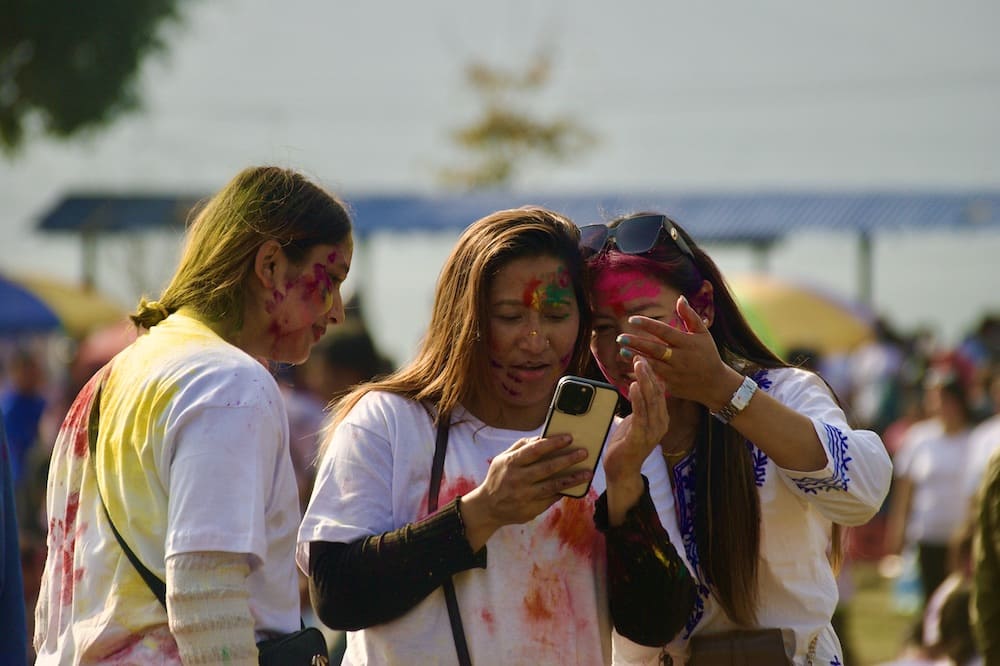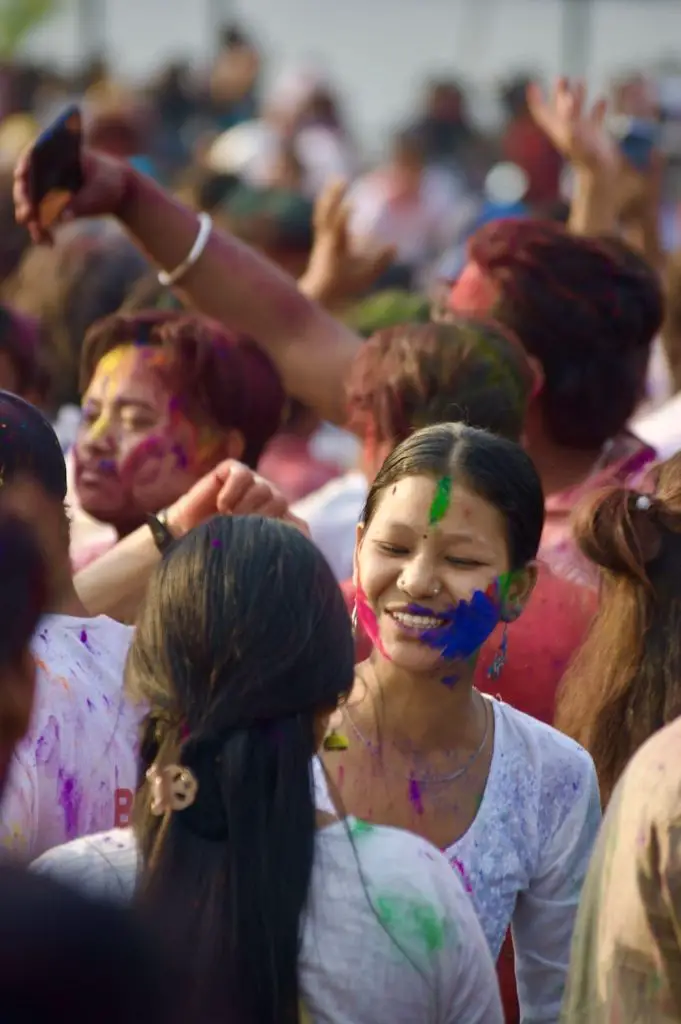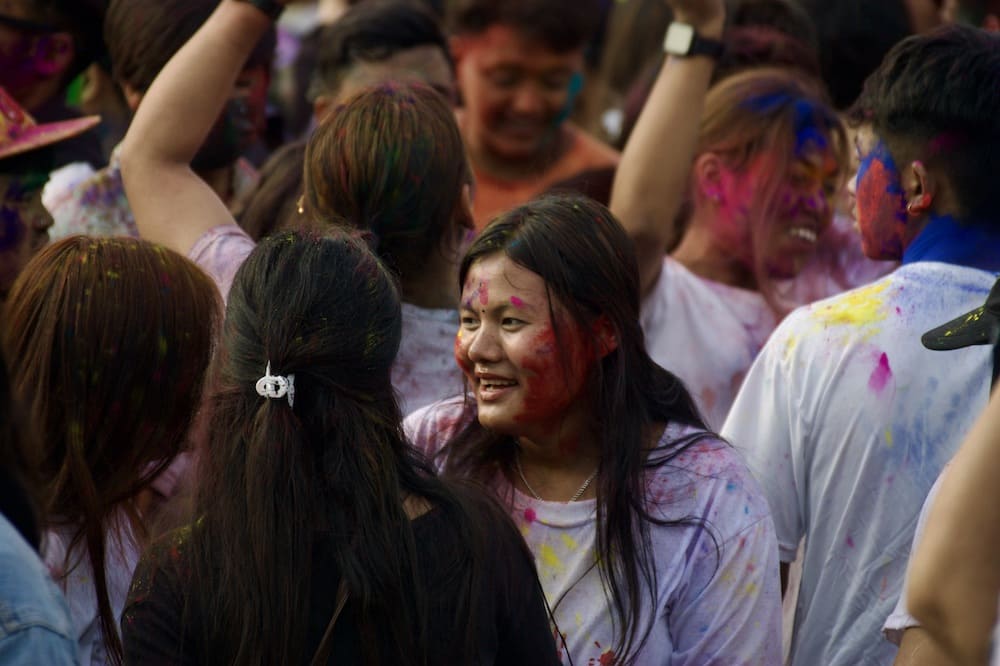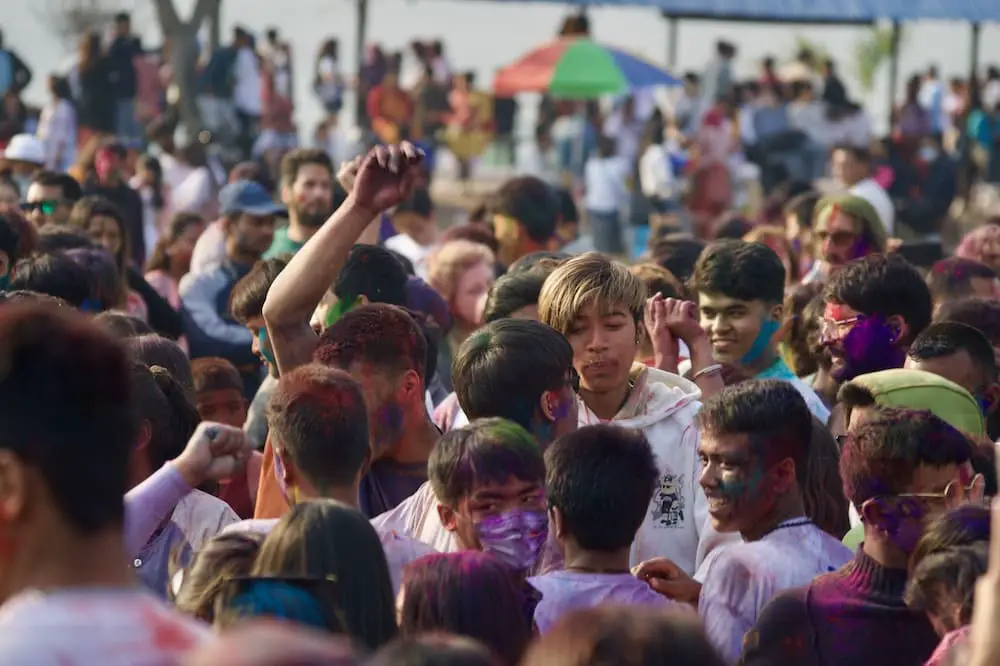Holi is a festival of colors celebrated in Nepal and India, typically in late February or early March. It is a joyous occasion that brings people together to enjoy and celebrate Holi, which marks the arrival of spring and the triumph of good over evil.
Also called the festival of colors, the celebration is conducted with bright colors and water. In this blog post, we will explore the significance and history of Holi, its celebration in Nepal, and some of the most exciting aspects of the Festival of Colors!
What is Holi?
Holi, is a Hindu festival that celebrates the arrival of spring and good’s victory over evil. The time is used to forgive, forget, and strengthen relationships with loved ones. During the festival, people throw powder of every color and water at each other, sing and dance to music, and enjoy festive foods and drinks.
Holi is a renowned Hindu festival rooted in ancient tradition and is widely celebrated in Hinduism. The occasion honors the immortal and sacred love shared by the gods Radha and Krishna while also symbolizing the supremacy of good over evil. It marks the conquest of Hiranyakashipu by the god Vishnu in his Narasimha Narayana form.
Curious about other festivals celebrated throughout the country? Then check out my blog covering 40 festivals in Nepal!
What is Holi celebrated for?

Celebrated for centuries in the Indian subcontinent, Holi has been documented in poems dating back to the 4th century CE. The festival welcomes spring after a long winter and symbolizes how good triumphed over evil. The celebration falls in March, corresponding to the Hindu calendar month of Phalguna.
Holi’s origin has been recorded in various works of ancient Indian literature, with one popular version telling of an oppressive king who compelled his people to worship him as a god. However, the king’s son Prahlada remained devoted to Lord Vishnu, enraging the king, who plotted with his sister, Holika, to kill Prahlada. Holika, immune to fire, deceived Prahlada into sitting on a pyre with her. Prahlada’s devotion to Lord Vishnu enabled him to escape unscathed, while Holika, for whom the festival is named, was burned to death despite her immunity.
Holi is celebrated to honor the victory of good over evil and welcome the arrival of spring. It is a time to let go of all of one’s grudges, forgive, and forget. The festival also has religious significance, as it is associated with various Hindu deities, including Lord Krishna and Lord Shiva.
Where is Holi mainly celebrated?

Holi is primarily celebrated in the subcontinent of India – more specifically in Nepal and India. However, the festival is celebrated by Hindu communities around the world. The festival is most widely celebrated in Northern and Western India, including Rajasthan, Uttar Pradesh, Gujarat, and Nepal.
The best place to celebrate the festival of colors in Nepal is Kathmandu. Locals and tourists alike enjoy celebrating around the Thamel area. You can also celebrate in Pokhara around Lakeside!
Holi is also celebrated in Chitwan, and Lumbini but the celebrations are not as big. Throughout Nepal, no matter where you are, you will be able to find some sort of celebration and people playing Holi.
When is the Holi festival?
The date of the Holi festival varies from year to year, as it is based on the Hindu calendar. It is usually celebrated in late February or early March. The Festival of Color is celebrated in the Nepali month of Phalguna – To find out the exact date, check out my Nepali date calendar blog.
When is Holi?
- March 6 and 7, 2023
- March 25 and 26, 2024
- Mar 14 and 15, 2025
In honour of which god is Holi celebrated?
The Festival of Colours, Love and Spring – Holi, is a significant and widely celebrated Hindu festival that honors the eternal and divine love between the deities Radha and Krishna.
Which religion celebrates the Holi festival?
The Holi Festival has its origins in Hinduism. However, the festival is an inclusive celebration emphasizing unity amongst different religions. While primarily observed by Hindus, the festival is now celebrated worldwide.
Want to find out more about different religions? Then check out my blog covering religions in Nepal!
What are the myths behind the Holi celebration?
Holi, including the Holika bonfire, is a celebration that symbolizes good’s victory over evil, commemorating Prahlada’s victory over Hiranyakashipu and the fire that engulfed Holika.
Holi is steeped in mythology and folklore, and many stories are associated with the festival. One of the most popular stories is that of the demon king Hiranyakashipu, who Lord Brahma helped, and which made him invincible. Hiranyakashipu became arrogant and demanded that everyone worship him as a god. However, his son Prahlada remained devoted to Lord Vishnu, which angered Hiranyakashipu. He tried to kill Prahlada, but Lord Vishnu protected him. Finally, Lord Vishnu killed Hiranyakashipu, and the victory of good over evil is celebrated during Holi.
What is the Story of Holi, the Festival of Colors?
According to the tale, Krishna, a Hindu deity regarded as an embodiment of Vishnu, fell in love with Radha, a milkmaid. However, he felt ashamed that his skin was dark blue while Radha’s was fair. To remedy this, during a game with Radha and other milkmaids, he mischievously colored her face.
Overall, the story of Holi, or the festival of colors, is a story of love, devotion, and triumph over evil. It is a time to come together with loved ones and celebrate the beauty and joy of life.
What is the Holi Festival Like?

The Holi festival is a lively and colorful celebration with music, dancing, and plenty of food and drink. It is a time to let go of negativity and focus on life’s positive aspects. People wear white clothes to the festival and get covered in vibrant-colored powder and water as the day progresses. The festival is often accompanied by music, drumming, and singing; people dance and celebrate throughout the day.
It is celebrated throughout Nepal, with Kathmandu and Pokhara being the best places to enjoy the festival. Both cities have tourists and locals celebrating in the streets by throwing bright colors and water, dancing, singing, and partying the day away!
FAQs: Holi in Nepal The Festival of Colors
Below are some of the most frequently asked questions regarding Holi in Nepal!
Holi is a Hindu festival that is celebrated in Nepal and India. Also known as the “festival of colors,” as people throw powder of different colors and water at each other. Holi is celebrated to welcome spring’s arrival and commemorate the victory of good over evil.
During the festival, people gather around the city and in the streets to cover each other with colored powder and water. They also exchange sweets and visit their friends and family. In the evening, they gather around bonfires and sing and dance.
Holi is celebrated with great enthusiasm in Nepal, especially in the Terai region, located in the southern part of the country. People celebrate the festival by throwing colored powder and water at each other and exchanging sweets. They also visit their friends and family and share the joy of the festival.
In Kathmandu, the capital city of Nepal, the festival is celebrated with street processions and cultural programs. Many people also gather around bonfires in the evening and sing and dance.
Holi is celebrated on the full moon day of Phalguna, usually in February or March. The festival celebrates spring’s arrival and commemorates how good triumphed over evil.
Nepali people celebrate Holi to mark the beginning of spring and the victory of good over evil. The festival is also a time for people to unite and forgive each other for past mistakes.
The terai region in Nepal celebrates Holi the day after the hilly region. During this festival of justice, people gather wood and light bonfires to symbolize the demise of Holika, referred to as “Holika Dahan.”
